Planets in paran are important indicators of combined planetary energy.
All astrologers will agree that when planets are on angles they are "strong." And when you have two (or more) planets on two angles simultaneously, then, not only are the energies considered very strong, but they are also relating to one another. This can lead to either a synthesis of energy or a frustration of energies, depending on the two planets involved. Just think about the two planets. Do they work well together? Or is there dissonance? What might a more difficult combination be good for? (Maybe to successfully complete a difficult task.)
Let's look at some examples. (Note: for consistency, I'm using the same point in time for all locations. The time shown on the charts is local time for the place named. All times are 15:00 GMT.)
Today's paran chart for the West Coast of the United States:
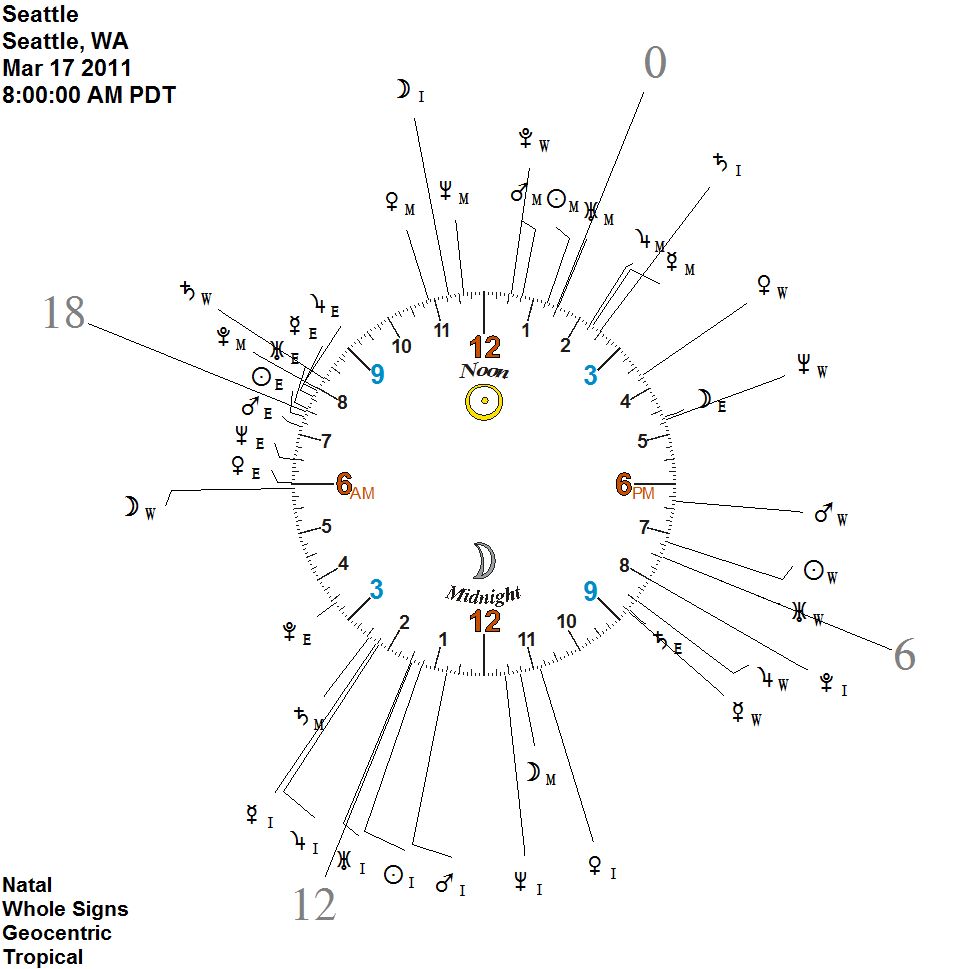
First, notice where there are overlapping lines. Those lines combining with other lines, that each indicate a different angle, are the most important. For example, an 'E' (East, or rising) with a 'M' (Midheaven, or culminating point). You can see in the chart above that there are a few times today when two planets are on different angles simultaneously. This is important for understanding the energy of the day. And is also potentially very important for knowing when that energy will be making its greatest impact in the locale being considered.
Notice Jupiter (E) rising, while Pluto (M) is culminating at around 8AM in the paran chart above. (I realize it is hard to see the lines clearly when they are bunched up. Sorry.) What I wan't to point out is how easy it can be to overlook important indicators of the day (or combined planetary energies) when looking only at a regular "pie wheel" chart (below).
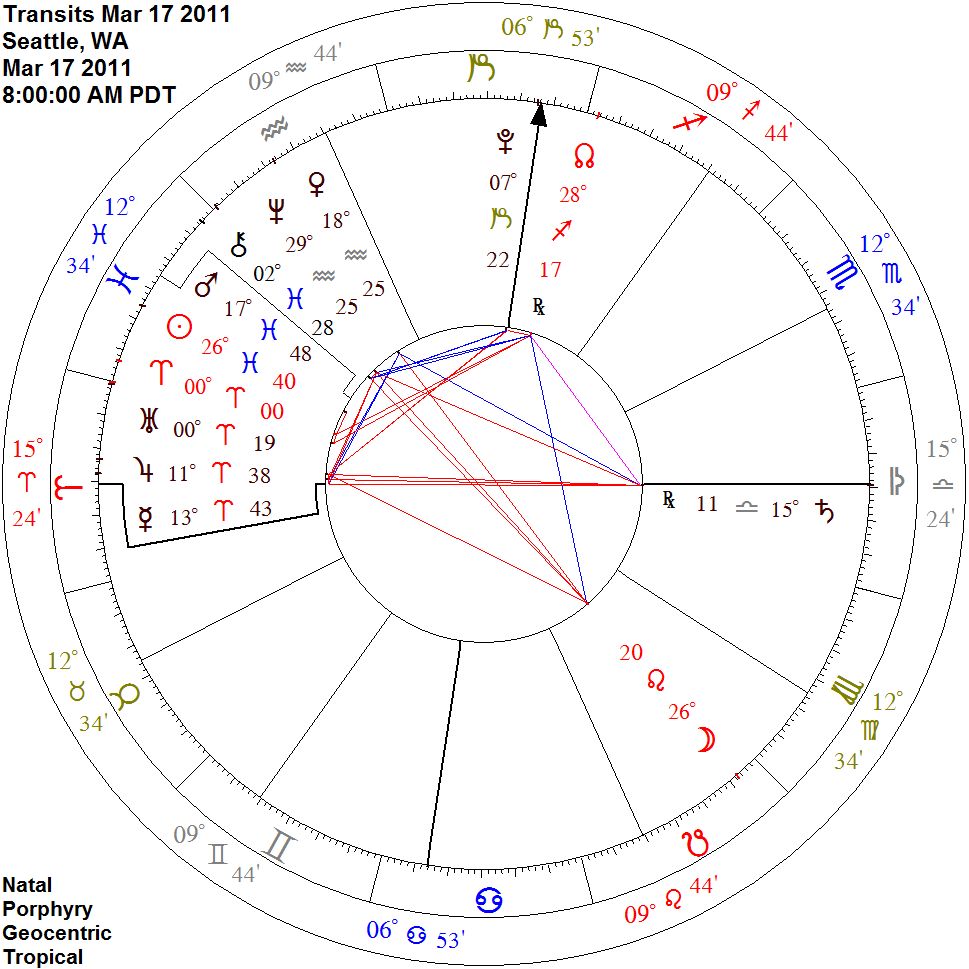
Yes, Pluto and Jupiter are close to the angles in this chart, but it misses the emphasis placed on their true paran relationship.
In fact, by typical astrological standards, they are hardly in aspect---a four degree separating square.
But by paran, they are indeed in a strong relationship for the time of day.
Another use for the paran chart, or paran clock, is to see quickly when certain relationships are forming on the angles. And you'll see that the time of day doesn't actually vary that much worldwide---but how precise the paran relationship is, can vary largely---and this is quite important.
Take for example the Moon rising (E) while Neptune is setting (W) at about 4:45PM in the paran chart. In Seattle, at that time (chart below), the Moon Neptune combo is in a fairly close opposition near those angles.
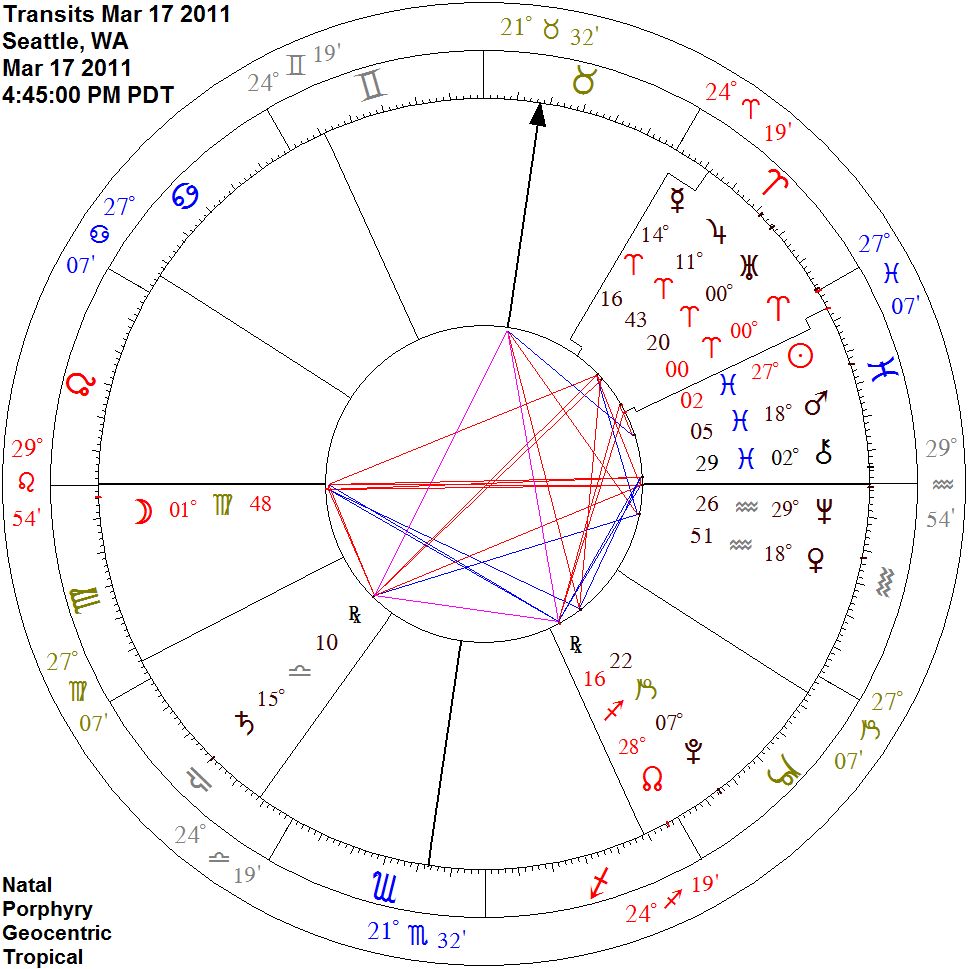
And as you can see in the chart below for London, Moon Neptune is strong as well. However in other places in the world (charts at the bottom of the article) you'll find the Moon Neptune combo happening at a roughly similar time, but its true paran relationship breaks down completely. And this is important.
This is the paran chart for today in London:
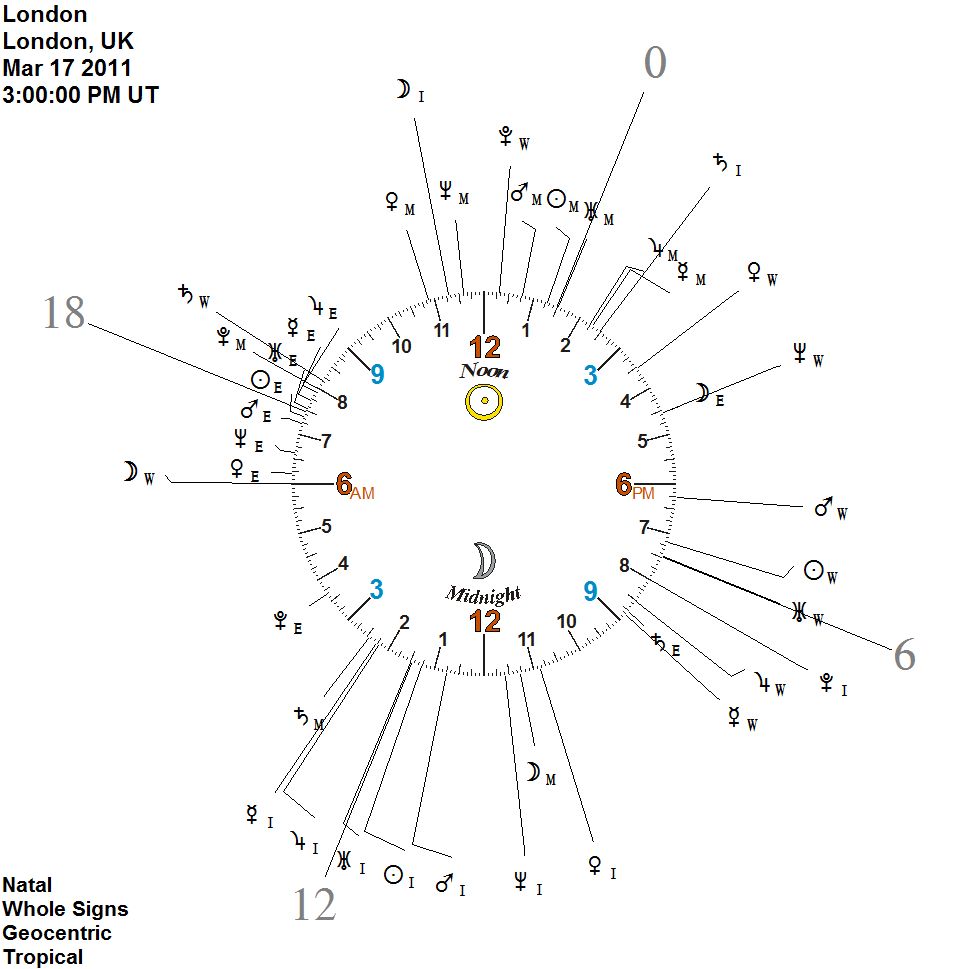
With regards to Moon Neptune, what might this speak to for the day? Increased sensitivity, possibly compassion. Maybe a time of marked receptivity or dreaminess. A need for relaxation, or escapism---did somebody say Happy Hour?
There is another important paran taking place in both charts and that is between Mercury and Saturn. (This accentuates the currently building Mercury Saturn opposition. But it is important to note that planets in paran relationship are not always in aspect.) So this evening while Mercury sets (W) Saturn rises (E) a little before 9PM. And, as you can see, this paran holds up, it remains strong.
Think about what this combination can indicate. Gloominess, a somber mood, serious or even depressed thinking. Likely it reflects the collective sadness we feel with what has happened this past week. Maybe it is indicative of worry, or even fearful thinking; with what's up globally and nationally right now, that's not surprising. Rigorous study is another way to think of Mercury Saturn. Its effect late this evening could assist or prod us in thinking carefully about what measures or steps we may need to take in order to ensure our own safety locally and/or globally. Or maybe it is simply descriptive of a time when many of us are thinking more realistically about our future, and our limited stay here on the planet. What can we do to responsibly contribute to the health of our planet, or to our communities?
To get a better picture of how things can look quite different by paran in other parts of the world on the same day, I've included the charts of Mumbai, India and Singapore:
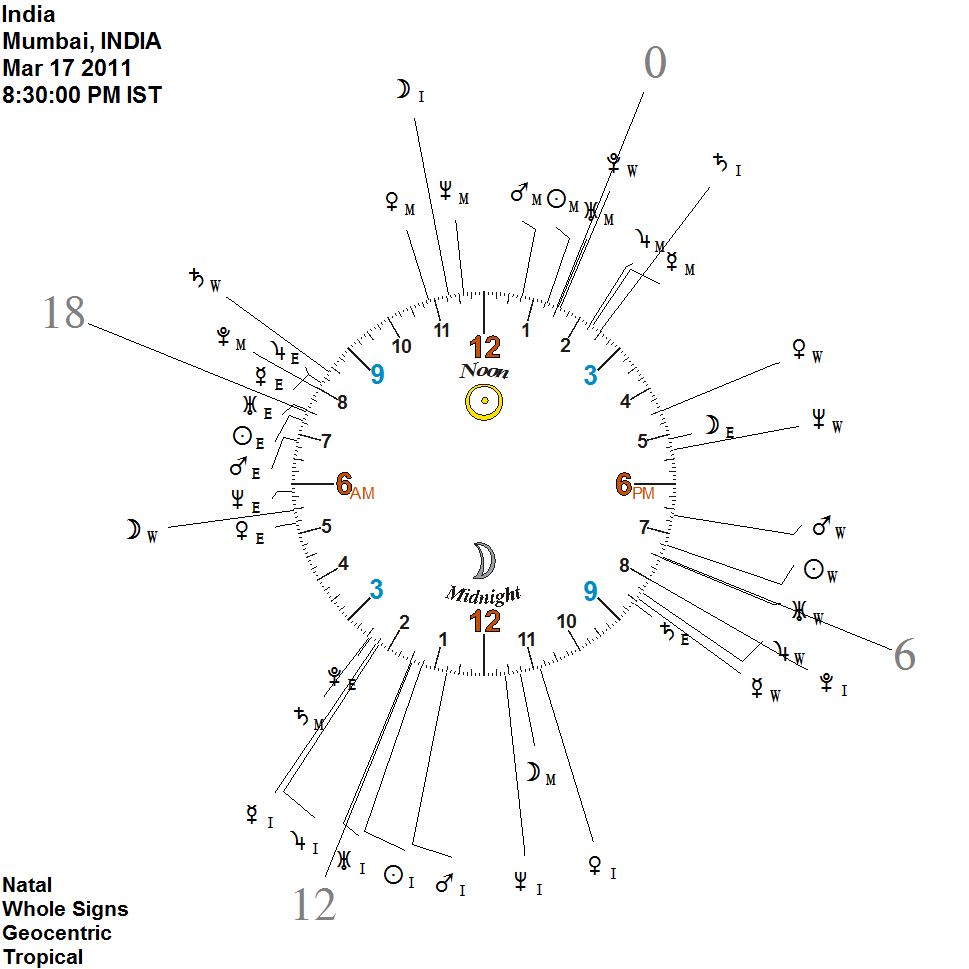
There are several things of interest here, but we'll just touch on a few.
Notice first that Moon Neptune is happening at a similar time of day, but are not closely aligned in paran anymore. Meaning, at the time the Moon and Neptune crossed over their respective angles they were not in a strong aspect (opposition). This may indicate that these particular energies won't be felt quite as strongly as they are by those of us in the U.S. and U.K. today.
Also notice the Mercury Saturn we were referring to before. It loses strength, as does the Jupiter Pluto combination in the morning. One eye catching thing that stands out in the chart for India is Uranus culminating (M) while Pluto is setting (W) at 1:15PM. These two planets are not even close to being in paran in all of the other charts! The same goes for the combination of Saturn and Pluto at 2:15AM. Consider these energies. Pluto is indicative of development and transformation; with Uranus, expect things to be sudden or revolutionary; with Saturn, it could be hindered or difficult. These are just examples, not predictions.
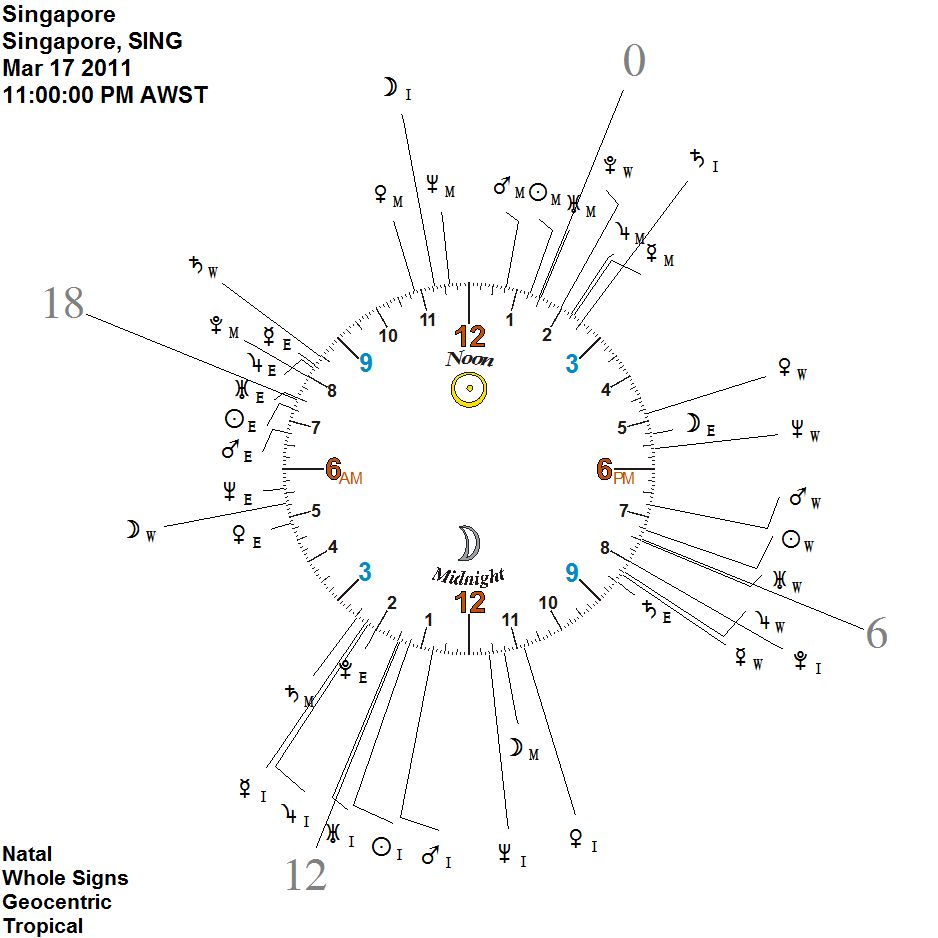
In Singapore, by contrast, as far as planetary parans go, well... things look pretty mellow.
To conclude, obviously there are many, many ways to interpret planetary energies. And I encourage you to play with this a bit. Apply it to some of the combinations mentioned, find some others. Think about what is going on where. If you'd like to share, leave a comment.
One final important thing to note---parans can be applied to the natal chart!
 Thursday, September 20, 2012
Thursday, September 20, 2012 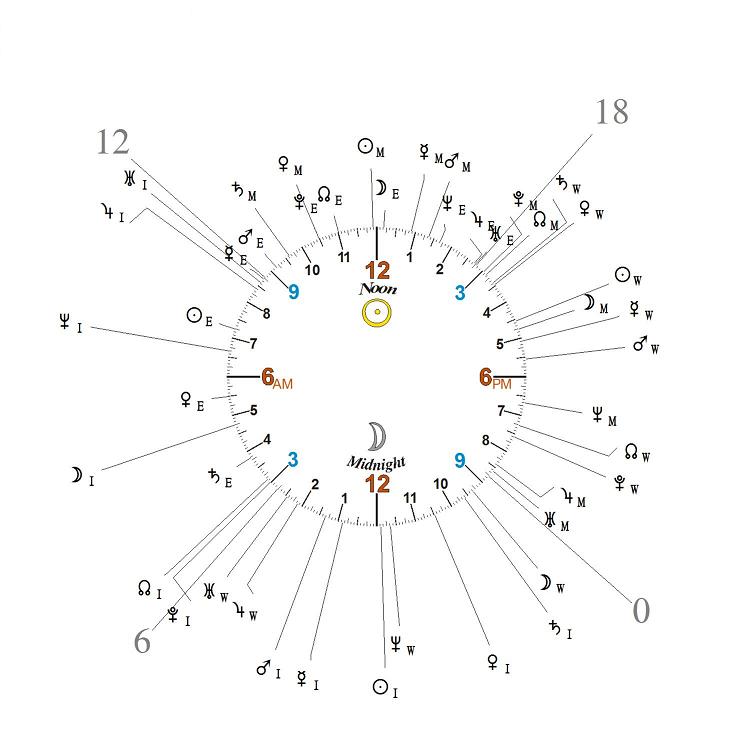


 Kate |
Kate |  Post a Comment |
Post a Comment |  ascendant,
ascendant,  ecliptic,
ecliptic,  horizon,
horizon,  meridian,
meridian,  paran clock,
paran clock,  parans,
parans,  rising sign,
rising sign,  stars on angles,
stars on angles,  venus pluto
venus pluto 




